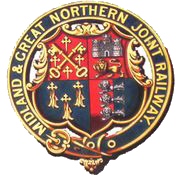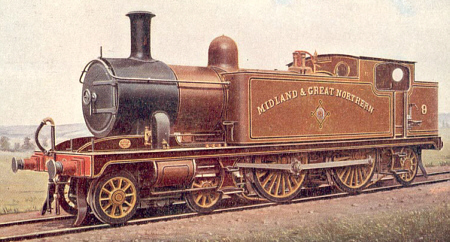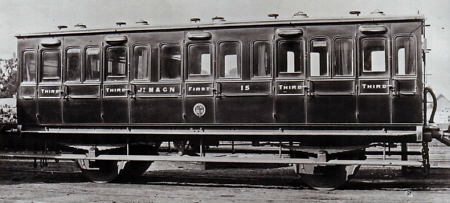MGN Liveries
19th Century liveries are often open to conjecture. It is also notoriously difficult to reproduce accurate colours on a computer screen, so this has not been attempted. Accurate matches should be taken from preserved vehicles, museums, or historical societies.

Locomotives
The Midland & Great Northern Joint Railway's (M&GN) badge consisted of images derived from the coat of arms of the four principal cities and towns that it served. Clockwise from top left, these were: Peterborough, Norwich, Great Yarmouth, and King's Lynn.
M&GN locomotives are often described as yellow, but were actually light golden brown. The colour has been described as Quaker green, autumn leaf, golden ochre, or willow green. Valences, outside cylinders, frames, and wheels were painted burnt sienna. Boiler bands were black with 0.25in lemon chrome edges.

A dark brown livery was introduced in 1922 for the 0-6-0 tender locomotives, and was extended to all locomotives in 1929. This consisted of burnt umber with some burnt sienna mixed in. A single lemon chrome line was used for lining.
The LNER painted all of the surviving M&GN locomotives in their black livery.
Coaching Stock

Coaches were finished with an imitation teak. This consisted of grey primer, buff undercoat, finished with graining in burnt umber, raw umber, and burn sienna water colours. 0.25in lemon chrome lining was fine lined with ultramarine blue. Coaches transferred from the Midland Railway and the Great Northern Railway in 1903 retained their original liveries until their first repaint. The imitation teak was then adopted.
Non-passenger stock was painted teak without lining.
Wagons
| Type | Colour |
| General, pre-1917 | Brown oxide |
| Unfitted vans, 1917 onwards | Medium grey |
| Open wagons, 1917 onwards | Medium grey |
| Service vehicles | Red oxide |
